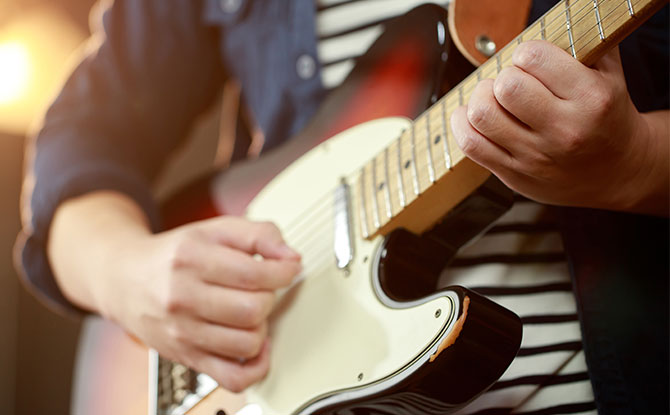In this EQ Ear Training for audio engineers, we will be listening to how a 12dB boost at different frequencies affects the sound of a Telecaster Guitar.
For this listening exercise, we will be applying +12dB boost to a Telecaster Guitar. This is a chance to better understand the effect that EQ has on the sound of a Telecaster Guitar.
What is a Telecaster Guitar?

Let’s start with a quick explanation of what is a Telecaster Guitar?
The Telecaster guitar, affectionately known as the “Tele,” boasts a signature sound that is renowned for its unmistakable twang and clarity.
The Telecaster’s single-coil pickups capture bright and crisp tones make it an ideal choice for intricate picking and chord work. A key characteristic is its pronounced twang factor that shines through when playing clean or lightly overdriven.
EQ Ear Training: Effects of 12dB Boost on a Telecaster Guitar
For this EQ Ear Training video, we will be applying a 12dB boost to the sound of a Telecaster Guitar at different intervals.
Listen along through a set of headphones to hear how the EQ changes the characteristic of the bass. This is how EQ can be used to shape the sound of the bass.
Here are some notes on the video as you listen along. We start off with a listen through of the original bass track without any EQ. After that, there will be a 12dB boost with a Q of 3.2 applied at regular intervals.
We recommend that you try making your own notes before referring to ours.
Listening Notes
Effect of boosts at
- 63Hz: Boomy
- 125Hz: Makes it extra bassy
- 250Hz: Highlights the low mids; overwhelms the high end.
- 500Hz: Enhances the “boxy” quality of the sound.
- 1kHz: Brings out the nasal quality of the guitar.
- 2kHz: Brings out the high mids
- 4kHz: Highlights the high-end frequencies.
- 8kHz: Adds more “zing” to the top.
- 16kHz: Less obvious.
We hope that the listening notes help you as you listen along to the video and give you a better way to relate EQ to the impact it can have on the sound of an instrument.
Each instrument is different but you can use the above as a guide when you need to make decisions about EQ.
If you liked this video, you may also wish to listen to this other one on ear training with a 9dB cut to the Jazz bass sound.

